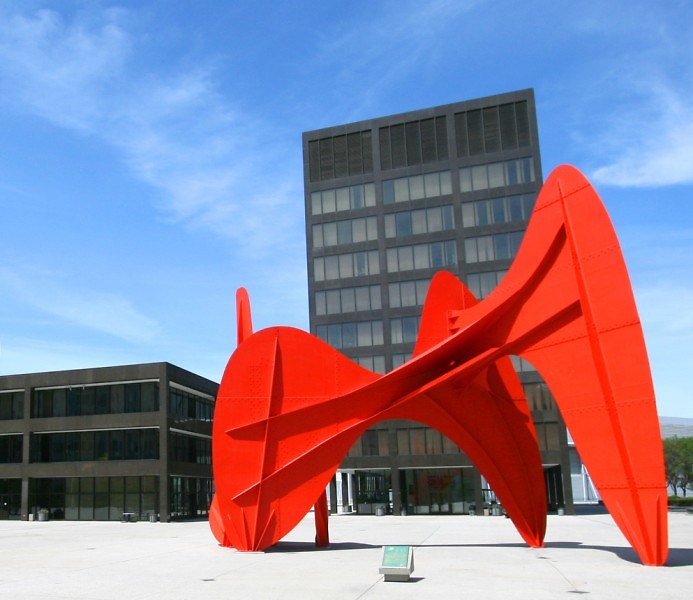Have an idea to enhance the too-often uninviting and barren plaza that surrounds Grand Rapids City Hall and the Kent County Administration Building? Well, now is the time to share your idea with the community.
After years of casual civic banter about how – if at all – to make this public space better, a formally organized effort now seeks to re-envision this civic center in the heart of Downtown Grand Rapids.
The effort, facilitated by the City of Grand Rapids, Downtown Grand Rapids Inc., and Kent County, holds its first public meeting on Tuesday, June 28. The session begins at 7:00 p.m. with a walking tour of the plaza followed by an open discussion of possible ways to make the space – technically a city park – more appealing and comfortable for everyday use. Click here for the event details on Facebook.
The concept for the plaza first emerged in the 1950’s, as the City of Grand Rapids and Kent County began exploring the potential for a joint City-County complex. A 1956 conceptual rendering actually shows a proposed plan for a “central mall” situated on the riverfront, flanked by city and county offices, immediately south of Michigan Street.
In other words, one original thought seemingly was to locate these public facilities on the west side of Monroe Avenue. A search of local historical archives reveals little evidence on why these facilities were ultimately built to the east of Monroe Avenue. A 1965 “project plan” for the City-County Administration Building also depicts a “fountain” on the plaza generally where Alexander Calder’s celebrated La Grande Vitesse now stands.
Today the concrete public plaza that surrounds Grand Rapids City Hall and the Kent County Administration Building is approximately 160,000 square feet. Calder’s sculpture – the first public art funded by a special public art program managed by the National Endowment for the Arts – sits prominently on one percent of that area. This makes the space easily programmable for myriad large-scale community events such as Festival of the Arts, the African American Art and Music Celebration, the Hispanic Festival, ArtPrize and other occasions that, taken together, use the plaza some 40 days of the year.
But for the 325 or so days of the year when the plaza sits idle, the community has expressed significant interest, most recently through the GR Forward process, in finding and implementing new ways to better integrate the public space into civic life.
The exploration of possibilities kicks off publicly next week and aspires to identify new interventions that help to achieve the following preliminary goals:
-
Leverage the plaza to its fullest potential;
-
Honor the plaza’s cultural heritage;
-
Improve access and mobility;
-
Embrace the plaza’s historic role as a governmental plaza;
-
Activate the plaza during all seasons;
-
Catalyze future development; and
-
Create iconic experiences for current and future generations.
For tips on great public space design, check out the Project for Public Spaces.
To submit your solutions for a better plaza, participate in the upcoming public meetings or share your ideas with Downtown Grand Rapids Inc. via Twitter, Facebook message or email.
Stay tuned to DGRI’s website for project information and updates.
The Rapidian, a program of the 501(c)3 nonprofit Community Media Center, relies on the community’s support to help cover the cost of training reporters and publishing content.
We need your help.
If each of our readers and content creators who values this community platform help support its creation and maintenance, The Rapidian can continue to educate and facilitate a conversation around issues for years to come.
Please support The Rapidian and make a contribution today.



